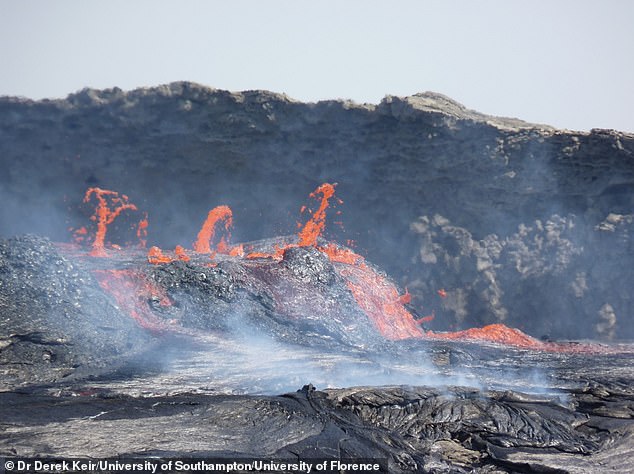
Deep Earth Pulses Beneath Ethiopia Trigger Warnings of Africa’s Continental Split
Africa’s Great Split: A Continent Torn Apart by Deep Earth Forces
Scientists warn that Africa is undergoing a dramatic geological transformation, with a massive crack slowly tearing the continent apart. Over millions of years, this rift could create a new ocean, splitting eastern Africa—including Somalia, Kenya, and Ethiopia—into a separate landmass with its own coastline.
The Rift Beneath Ethiopia
The process centers on Ethiopia’s Afar region, where three tectonic rifts converge (the Main Ethiopian Rift, Red Sea Rift, and Gulf of Aden Rift). Researchers from Swansea University discovered rhythmic pulses of molten rock surging from the Earth’s mantle, stretching the crust and accelerating the continental split.
Image: Active lava flows at Erta Ale volcano, Afar, Ethiopia, where volcanic activity signals the rift’s progression.
Dr. Emma Watts, lead author of the study published in Nature Geoscience, explains: “The split is already happening at 5–16 mm per year in the north. It will take millions of years to complete, but eventually, Africa will divide into two continents—”a smaller eastern block (~1 million sq mi) and a larger western block (~10 million sq mi). Bodies of water like Lake Malawi and Lake Turkana may also split during this process.
Image: Map illustrating the hypothesized rift progression and future coastline formation.
How Mantle Pulses Drive the Split
The team analyzed 130 volcanic rock samples from Afar, revealing that the mantle plume beneath the region isn’t static. Instead, it pulses upward, thinning the crust and weakening tectonic plates. These pulses vary based on plate thickness and separation speed, channeling molten rock into the rifts.
Image: Microscope view of volcanic rock samples from Afar, showing chemical traces of mantle activity.
Dr. Derek Keir, a co-author, notes, “The mantle’s movement is directly tied to plate shifts above it. This interaction fuels earthquakes and volcanic activity while reshaping the continent.”
Birth of a New Ocean
The Afar region’s crust has already thinned to near-breaking point. Once it ruptures, magma will fill the gap, forming a new oceanic basin. Similar rifting created the Atlantic Ocean 138 million years ago. Seafloor spreading is expected to extend along the entire rift over tens of millions of years.
Image: Satellite view of the Gulf of Aden, where the split began, separating Africa and Yemen.
What’s Next?
While the rift poses no immediate danger, it offers a rare chance to study continental breakup in real time. For locals, however, volcanic eruptions and earthquakes may increase as tectonic stress builds.
Image: Fresh lava flows in Afar, highlighting the region’s volatile geology.
Bottom Line
Africa’s slow-motion split underscores Earth’s dynamic nature. As the mantle’s “heartbeat” continues, the continent’s future map will be unrecognizable—a testament to the planet’s ever-changing surface.
Key Facts:
- Cause: Mantle pulses beneath Ethiopia’s Afar region.
- Speed: 5–16 mm/year in the north.
- Timeline: Split completion in 5–10 million years.
- Result: A new ocean and two continents.
Images and models credited to Swansea University and geological surveys.


